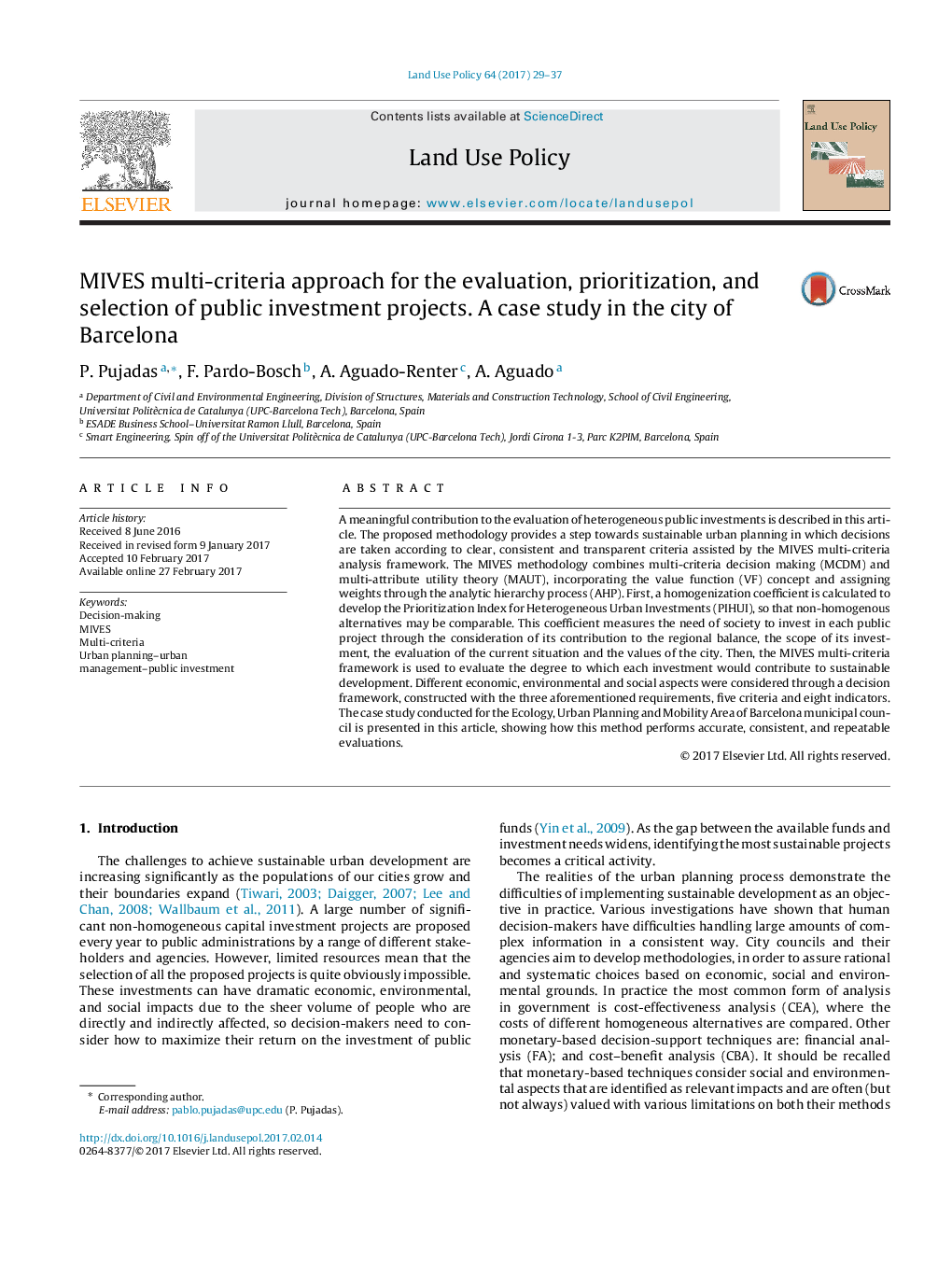| کد مقاله | کد نشریه | سال انتشار | مقاله انگلیسی | نسخه تمام متن |
|---|---|---|---|---|
| 6460789 | 1421819 | 2017 | 9 صفحه PDF | دانلود رایگان |

- The papers develop a Prioritization Index for Heterogeneous Urban Investments (PIHUI).
- The PIHUI index provides a step towards a sustainable urban planning in which decisions are made according to clear, consistent and transparent criteria.
- A MIVES multi-criteria framework is used to prioritize urban investments according to pre-established criteria in order to satisfy a pre-defined sustainable objective.
- The case study conducted for the Barcelona Ecology, Urban Planning and Mobility Area is in this presented.
- The method yielded accurate, consistent, and repeatable evaluations.
A meaningful contribution to the evaluation of heterogeneous public investments is described in this article. The proposed methodology provides a step towards sustainable urban planning in which decisions are taken according to clear, consistent and transparent criteria assisted by the MIVES multi-criteria analysis framework. The MIVES methodology combines multi-criteria decision making (MCDM) and multi-attribute utility theory (MAUT), incorporating the value function (VF) concept and assigning weights through the analytic hierarchy process (AHP). First, a homogenization coefficient is calculated to develop the Prioritization Index for Heterogeneous Urban Investments (PIHUI), so that non-homogenous alternatives may be comparable. This coefficient measures the need of society to invest in each public project through the consideration of its contribution to the regional balance, the scope of its investment, the evaluation of the current situation and the values of the city. Then, the MIVES multi-criteria framework is used to evaluate the degree to which each investment would contribute to sustainable development. Different economic, environmental and social aspects were considered through a decision framework, constructed with the three aforementioned requirements, five criteria and eight indicators. The case study conducted for the Ecology, Urban Planning and Mobility Area of Barcelona municipal council is presented in this article, showing how this method performs accurate, consistent, and repeatable evaluations.
Journal: Land Use Policy - Volume 64, May 2017, Pages 29-37